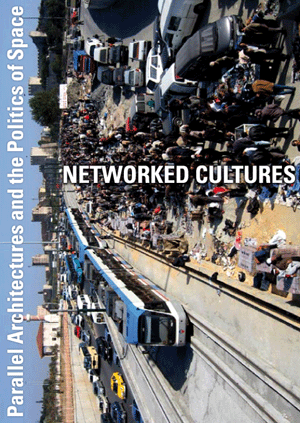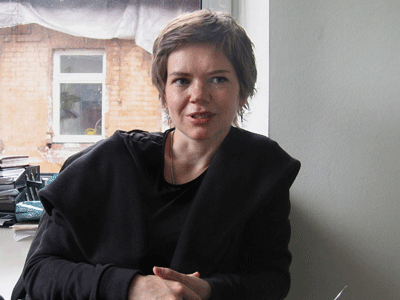_loginregistrieren_database_5 Factories - Worker Control in Venezuela Dario Azzellini & Oliver Ressler _ALMOSTREAL ECF _AnArchitektur Jesko Fezer _Arizona Road Azra Aksamija _Balkan Konsulat rotor _Bata-ville: We are not afraid of the future Nina Pope + Karen Guthrie / www.somewhere.org.uk _Black Benz Race krcf in collaboration with Felix Stalder, Arben Gecaj, Faton Topalli and Osman Osmani _Black Sea Files Ursula Biemann _Camp La Jolla Military ParkOwen Mundy _CHANGE REALITY: Renaming the Streets of Zagreb REINIGUNGSGESELLSCHAFT _Conceptual Paradise. There is a place for sophistication Stefan Roemer _de-regulation Irit Rogoff, Kutlug Ataman, Stefan Roemer_news ____________Bloomberg SPACE, London ____________Kumu Art Museum Tallinn ____________Open Space, Open Systems - Vienna ____________CAA 2011 Conference, New York ____________Forum Stadtpark, Graz ____________Symposium, Istanbul ____________lungomare, Bozen/Bolzano ____________Metropolis Biennale 2007-17, Copenhagen ____________new publication available now ____________Mestna Galerija, Ljubljana ____________Livestream of Networked Cultures documentary ____________ |
_ConversationsAsya FilippovaProekt_Fabrika, Moscow
Asya Filippova
PM/HM: PROEKT_FABRIKA is one of the most exceptional contemporary art spaces in Moscow. Can you tell us about your involvement in its formation? Asya Filippova: Well, I’m the director of the factory, and this factory is a bit different from other art spaces in Moscow. Most such factories are no longer functioning production sites, but our factory still produces technical paper. It’s still in operation, though of course it’s very different from in Soviet times, because back then the factory was quite huge and massive, and supplied paper to all of Eastern Europe – Poland, Czechoslovakia, Yugoslavia and other socialist countries. Nowadays we produce very special kinds of paper and only for Russia. Anyway, production was reduced and many spaces, mainly industrial workshops, became vacant. And then there was the fact that, besides being the director of the factory, I’ve lots of friends among artists and gallery owners. So one day I realised I might be able to offer a space for cultural projects like exhibitions. Initially, to be honest with you, my idea was quite modest. I just intended to open a space where my friends could have private exhibitions of contemporary art. I invited Elena Kuprina, who runs her own gallery, E.K. ArtBureau, to come take a look at the space. She said, “Yes, it would be fine for exhibitions.” So we opened in January 2005, while the first Moscow Biennale of Contemporary Art was taking place. We started with a special project called No Comment, an exhibition of young Russian artists. And then the project actually started to develop and grow on its own. Not that I planned it that way, it was not my strategy to invite theatre people or musicians or architects. But people began coming and were interested in the spaces we had. In Soviet times, for instance, it was common practice for every plant and every factory to have a club for workers, so-called Palaces of Culture. So we also had this Palace of Culture, and one day I invited Elena Tupyseva over – she’s the director of the contemporary dance company Tsekh, a well-known agency in Russia, sponsored by the Ford Foundation. I showed her this space, our Palace of Culture, and she decided to renovate it and turn it into a venue for contemporary dance and concerts. It started to grow all by itself – we just selected people with similar ideas, similar preferences, and so on. Then, last summer the Ford Foundation invited us to New York. We went there and took part in a workshop called “Sustainable Art Spaces”, and that’s when I understood that we were probably a sustainable art space, too. In the first year, maybe a hundred people came to see the exhibition and about ten people rang me up from time to time to ask about my plans, but by no means did everybody in Moscow know about us. And then suddenly a few months ago, I realised I was being literally inundated with offers, questions and ideas, which may mean this is the right moment to move on to the next level. PM/HM: How is PROEKT_FABRIKA connected to places outside Moscow ? Asya Filippova: Well usually everything is concentrated in Moscow itself. There aren’t so many contemporary artists living in, I don’t know... Saratov or Voronezh. Many artists came here quite some time ago and are now working here in Moscow, which means we mostly deal with people from Moscow and St. Petersburg. Though sometimes we have joint projects with the National Institute of Contemporary Art and the National Centre of Contemporary Art. They arrange yearly festivals of young artists and engage artists from all over Russia, because they have some departments and representatives in other towns and regions of Russia. In other words, they’re in a position to set up such a network, and it enables us to collaborate with people from outside Moscow. Regarding foreign artists, well, it’s absolutely absurd and strange, but it’s easier for us to deal with artists from Germany, Holland or Sweden than with artists from other parts of Russia, because the rest of Russia is completely different from Moscow – actually Russia has two completely separate parts. In June 2007, I was at the Trans Europe Halles meeting in Vilnius and I’m now thinking about joining this network of independent culture centres. PM/HM: Given the economic boom of business developments in central locations in Moscow, do such experimental and hybrid spaces have a future? Asya Filippova: Well, I don’t think we’ll be able to continue producing technical papers for another twenty years. I don’t think that has a future, because it’s pure madness to try to produce anything in the centre of Moscow. At the moment our premises include three different kinds of areas: one area is production itself; the second area consists of so-called cultural spaces; and the third, offices for rent – this is the commercial sector. In the future, I think production will be relocated away from here, while the so-called cultural sector will grow and develop. Nevertheless, there will still be enough space rented out to pay the bills, space for anybody who wants to come here and wishes to rent some offices for their business... or for other commercial purposes. Anybody can come here and rent a space, but of course I prefer to deal with people who are connected with creative industries – art, advertising, photography, cinema. In the past few months a lot of people have asked about spaces for film studios, for example, maybe this will be a new branch. Though there will always be two parts, one for cultural activities, and another for commercial offices and spaces for lease – for all those who enjoy being around people who are different than they are, people who dance, sing and make installations. PM/HM: Is there a network of collaborations or do the different kinds of people who have ideas for certain projects compete with one another? Asya Filippova: I wouldn’t say they compete all that much, not really. I was afraid it would be competitive, but I don’t think that’s the case at the moment. I don’t know about the future, but I’ve heard some say there isn’t enough contemporary art and culture in Moscow, not enough for the number of spaces, but I don’t know. Competition doesn’t exist yet, because people from, let’s say, Winzavod or Art Strelka come by, too, and we communicate and exchange ideas. And if an artist from Art Strelka needs a space for a studio, then his or her manager or gallery owner sends the artist to me, which means artists come here and if I can offer them something then I do. I would not call this a network, but it’s about contact, though then again, a very limited number of people is involved. Everybody knows everybody else, every gallery owner knows all the others, and every cultural manager in Moscow knows most of the others, too. We communicate and collaborate, more or less. I should also mention that our factory is different from other art centres – from the start it was not conceived as a commercial enterprise. Maybe it would be better to be as well planned and commercial as some of the other spaces, but we are just completely different. PM/HM: Do you think that the aesthetics of this complex plays a role for how artists feel when they come to your place, or are you thinking of renovating the building to enhance the cultural appeal of the location? Asya Filippova: Well, of course, I hope people are interested in our site. But I also know lots of people come and take a look at our buildings, and are either shocked or lost – so I have mixed feelings about it all. Though I myself like things how they are. I like the appeal of this site and the people who work and live here, and they like it too, though sometimes, they come and ask me: “Well, Asya, aren’t you planning to renovate the buildings after all? When is it going to happen?” So, yes, there’s a special atmosphere, I know this and they know it as well, but it doesn’t mean it will always remain this way. Of course we will renovate some things, but I hope the original architecture will not be ruined by plastic siding, business-centre architecture, and the spirit will remain the same.
|
_broadcasts_conversations+ Ana Dzokic and Marc Neelen+ Ayreen Anastas and Rene Gabri + atelier d'architecture autogérée (aaa) + Asya Filippova + Sophie Hope and Sarah Carrington + Branca Curcic + Christoph Schaefer + Campement Urbain + Claudia Zanfi + Despoina Sevasti and Poka-Yio + Erden Kosova + Helmut Batista _textsRadio as Spatial Practiceby: Paulo Tavares Survival Kits: Artistic Responses to Globalizationby: Marga van Mechelen What Ever Happened to Cultural Democracy?by: Sophie Hope I don't know how to explain ...by: Anca Gyemant Trading Placesby: Peter Moertenboeck & Helge Mooshammer Milosevic as Architectby: Srdjan Jovanovic Weiss When the Unavoidable Knocks at the Door ...by: Gulsen Bal Tracing Translocality: The BlackBenz Raceby: Felix Stalder travelling lexicon towards a global positioning systemby: Celine Condorelli |
